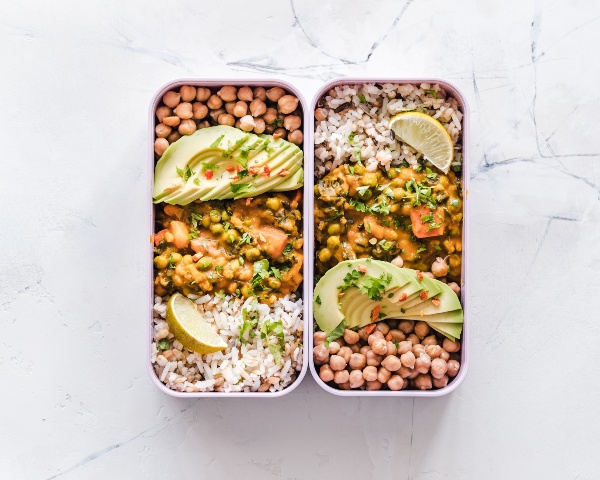According to the World Health Organisation (WHO), 1 in 10 people fall ill from eating contaminated food every year, with some 420, 000 people globally dying from it. You might feel that food poisoning is unlikely in your kitchen, but without high standards and well maintained food hygiene, you can’t be sure.
A well organised kitchen helps to ensure the safety of your staff and food in a working commercial kitchen. Similarly, you must also have a solid set of rules around cleaning and food hygiene in your commercial kitchen to make sure your customers are happy and that your food is always safe to consume.
At Foodstars, we want to support you in protecting your consumers, so we’ve put together this handy go-to guide of basic food hygiene regulations for your rented kitchen space, with reference to advice from the UK’s Food Standards Agency.
Food Hygiene Rules: Personal Hygiene In The Kitchen
Everyone in your kitchen needs to be maintaining their personal hygiene in order for your commercial kitchen to be a safe area for food preparation. Although food handlers aren’t required by law to have any food safety training or certification, to avoid food poisoning or other bacteria contamination issues, every food business using a kitchen should have clear, easily visible, rules for their staff.

Wash Hands Regularly
You staff should be properly washing their hands, with soap and warm water, whenever entering a food preparation space. Hands should be completely dried, on a clean towel, disposable paper towel or under an air dryer, as wet or damp hands can spread bacteria.
They should be washing their hands throughout the food preparation process, especially when handling raw meat, poultry or fish, even if they are using gloves – which should be changed with the ingredients being worked with.
Hair/Beard Nets
If your kitchen staff have long hair (any length that can be tied up or could fall in front of their face) or a beard (anything beyond stubble), then they should be wearing a hair/beard net. Stray hairs can fall into food, which is not only unpleasant but can contaminate foods. If in doubt about whether a member of the team should be wearing a hair net, err on the side of caution.
Clothing
Your staff should be working in clean clothes, including any aprons, chef hats and protective clothing. If you are not providing chef whites for your team, then you must ensure that work attire is clean and that there are spare clean clothes available should clothes become dirty.
Where possible, your staff should be arriving in their own clothes and changing at your kitchen or nearby before entering the food preparation areas. They should then change out of their working clothes once they have finished working and then wash their work clothes. Your staff should not be re-wearing worn clothes in the kitchen, even if they appear clean. You can make this easy by providing clothes and a washing service.
Accessories: Watches, Jewellery
No watches or hanging jewellery should be worn in a working commercial kitchen. Food hygiene issues can be caused from the bacteria that can be collected or passed on from these items. Dangling items can get caught on equipment, which is dangerous in an environment with hot liquids and heavy machinery. Similarly, watches can get caught on items in the kitchen.
Where jewellery has been allowed in a commercial kitchen, it is typically restricted to stud earrings, or covered with plasters to ensure it cannot fall out.
Sickness
If any member of your team is feeling unwell then they should not be working in your kitchen. Food hygiene is important and so anyone who is ill should never be allowed in your kitchen. Anyone contagious or who is known to have diarrhoea must not be allowed in any food handling area.
Depending on the condition, you should be keeping unwell staff out of the kitchen for a safe period of time. Use the NHS’s official guidelines to help you understand when staff can return to work.
Coughing & Sneezing
For food hygiene reasons, if anyone has to cough or sneeze in the kitchen, they should be told to turn away from any food they are handing and cough or sneeze into their elbow. They should then wash their hands and face before resuming work. If this is a symptom of a cold then they should leave the food handling and preparation area.
Cuts
Accidents happen in a commercial kitchen, especially when it comes to small nicks from knives during the food preparation stage. Maintaining food hygiene levels requires anyone with a cut to wear a plaster while it is healing – typically these are bright in colour, such as blue, so that if they do fall off they are easy to spot.
If your team member has a minor cut then the cut should be cleaned and, when it has stopped bleeding, be covered in a plaster. It is also suggested they wear plastic gloves if they are continuing any food handling.
Smoking
Any kitchen staff that smoke cigarettes should be doing so outside of the kitchen, in a designated smoking area. They must also wash their hands before resuming any food handling or preparation.
Food Hygiene Rules: Storage

Food hygiene and safety applies in your commercial kitchen in numerous ways. The personal cleanliness of your staff if just part of the story. How you store raw ingredients, cooked and prepared foods, at what temperatures and why is incredibly important. You can find out more in our Starter Guide: Food Safety, Storage & Waste In Commercial Kitchens.
When putting food into storage containers, make sure that you are doing so with clean hands. If you are putting raw meat, fish or poultry into containers, avoid touching the outside of containers if you have been touching the raw foods, or wipe down the containers with a cloth once they are sealed, then wash your hands before storing the containers. This will ensure you avoid transferring any bacteria to other stored items.
Food Hygiene Rules: Transporting
If you are using a “dark kitchen” for food deliveries or as the main food preparation area for your food business, then you will also need to be aware of how food hygiene is affected by transporting it. This includes what you are transporting food in, as well as how far and at what temperature.

Containers & Vehicles For Food Transportation
All of the containers, packaging and vehicles, including any carrying boxes or vehicle storage, must be kept clean and in a working condition. Transporting food properly will make sure that the food reaches your customers in the best condition and minimises the risk of contamination.
All containers, both for the food and to transport the orders in, should be capable of keeping the food at the right temperature, be that chilled or warm. For example, in a warm chain for food transport, the food is cooked, placed in containers and kept warm until it is placed in a heat maintaining transport bag that suits the mode of transport, allowing the food to arrive at a safe temperature for consumption.
Staff Training
By law you must make sure that your staff are aware of the below. While food handlers in the UK don’t have to hold a food hygiene certificate to prepare or sell food, it is suggested that staff are trained.

Food Safety And Hygiene Courses
Food safety and hygiene courses are a great way to ensure that your staff are trained properly, and have a full understanding of training and practices. Below are some suggested courses (prices are all +VAT):
- High Speed Training – you can attain up to three levels of food safety and hygiene, with courses from £15 (Level 1) to £125 (Level 3)
- Virtual College – food safety, hygiene and allergy courses. They range from £10-15 (Level 1/Basic) up to £87.50 (Supervisors Course).
- Food Safety UK – The Level 2 Food Safety & Hygiene Catering Course is available for just £10, and is the only course offered here.
Bookmark This Food Hygiene & Safety Guide
There is a lot to remember and return to when it comes to making sure that your kitchen is up to code when it comes to food safety and hygiene. Consider bookmarking this page for easy reference. Displaying key rules near your kitchen or a staff area will help to remind your kitchen staff of what is required.